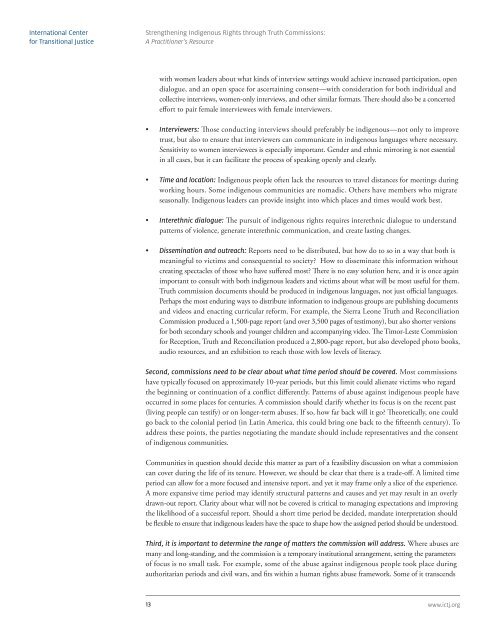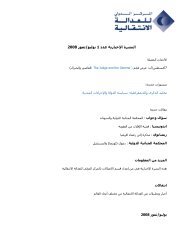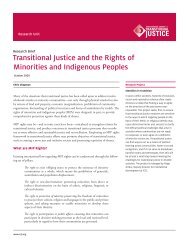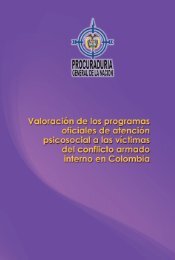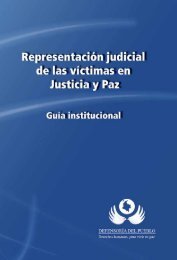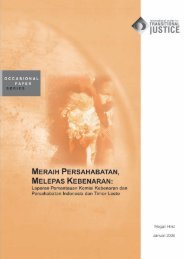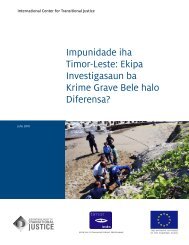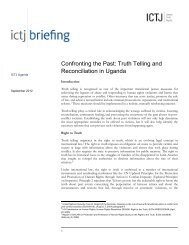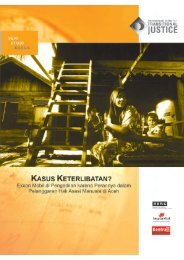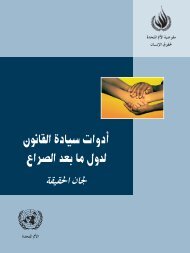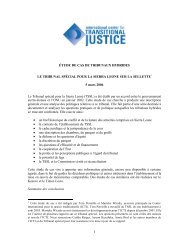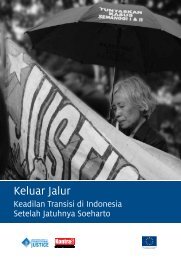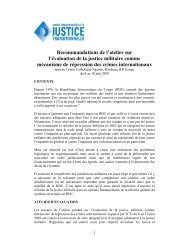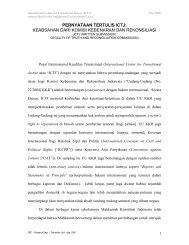Strengthening Indigenous Rights through Truth Commissions: A ...
Strengthening Indigenous Rights through Truth Commissions: A ...
Strengthening Indigenous Rights through Truth Commissions: A ...
- No tags were found...
You also want an ePaper? Increase the reach of your titles
YUMPU automatically turns print PDFs into web optimized ePapers that Google loves.
International Centerfor Transitional Justice<strong>Strengthening</strong> <strong>Indigenous</strong> <strong>Rights</strong> <strong>through</strong> <strong>Truth</strong> <strong>Commissions</strong>:A Practitioner’s Resourcewith women leaders about what kinds of interview settings would achieve increased participation, opendialogue, and an open space for ascertaining consent—with consideration for both individual andcollective interviews, women-only interviews, and other similar formats. There should also be a concertedeffort to pair female interviewees with female interviewers.• Interviewers: Those conducting interviews should preferably be indigenous—not only to improvetrust, but also to ensure that interviewers can communicate in indigenous languages where necessary.Sensitivity to women interviewees is especially important. Gender and ethnic mirroring is not essentialin all cases, but it can facilitate the process of speaking openly and clearly.• Time and location: <strong>Indigenous</strong> people often lack the resources to travel distances for meetings duringworking hours. Some indigenous communities are nomadic. Others have members who migrateseasonally. <strong>Indigenous</strong> leaders can provide insight into which places and times would work best.• Interethnic dialogue: The pursuit of indigenous rights requires interethnic dialogue to understandpatterns of violence, generate interethnic communication, and create lasting changes.• Dissemination and outreach: Reports need to be distributed, but how do to so in a way that both ismeaningful to victims and consequential to society? How to disseminate this information withoutcreating spectacles of those who have suffered most? There is no easy solution here, and it is once againimportant to consult with both indigenous leaders and victims about what will be most useful for them.<strong>Truth</strong> commission documents should be produced in indigenous languages, not just official languages.Perhaps the most enduring ways to distribute information to indigenous groups are publishing documentsand videos and enacting curricular reform. For example, the Sierra Leone <strong>Truth</strong> and ReconciliationCommission produced a 1,500-page report (and over 3,500 pages of testimony), but also shorter versionsfor both secondary schools and younger children and accompanying video. The Timor-Leste Commissionfor Reception, <strong>Truth</strong> and Reconciliation produced a 2,800-page report, but also developed photo books,audio resources, and an exhibition to reach those with low levels of literacy.Second, commissions need to be clear about what time period should be covered. Most commissionshave typically focused on approximately 10-year periods, but this limit could alienate victims who regardthe beginning or continuation of a conflict differently. Patterns of abuse against indigenous people haveoccurred in some places for centuries. A commission should clarify whether its focus is on the recent past(living people can testify) or on longer-term abuses. If so, how far back will it go? Theoretically, one couldgo back to the colonial period (in Latin America, this could bring one back to the fifteenth century). Toaddress these points, the parties negotiating the mandate should include representatives and the consentof indigenous communities.Communities in question should decide this matter as part of a feasibility discussion on what a commissioncan cover during the life of its tenure. However, we should be clear that there is a trade-off. A limited timeperiod can allow for a more focused and intensive report, and yet it may frame only a slice of the experience.A more expansive time period may identify structural patterns and causes and yet may result in an overlydrawn-out report. Clarity about what will not be covered is critical to managing expectations and improvingthe likelihood of a successful report. Should a short time period be decided, mandate interpretation shouldbe flexible to ensure that indigenous leaders have the space to shape how the assigned period should be understood.Third, it is important to determine the range of matters the commission will address. Where abuses aremany and long-standing, and the commission is a temporary institutional arrangement, setting the parametersof focus is no small task. For example, some of the abuse against indigenous people took place duringauthoritarian periods and civil wars, and fits within a human rights abuse framework. Some of it transcends13www.ictj.org


